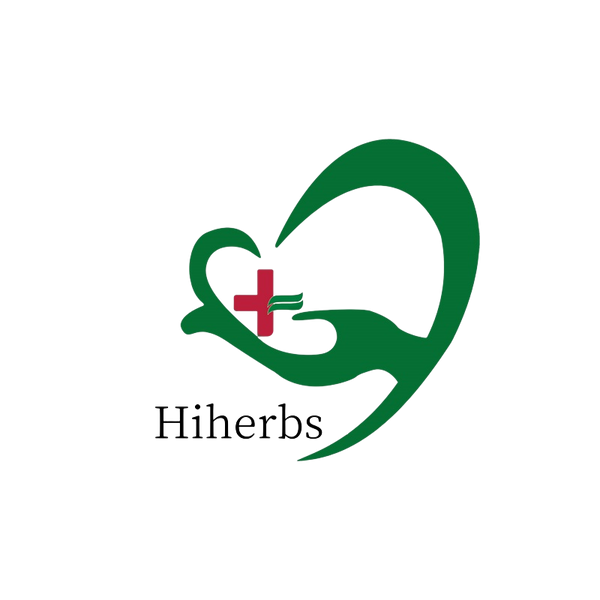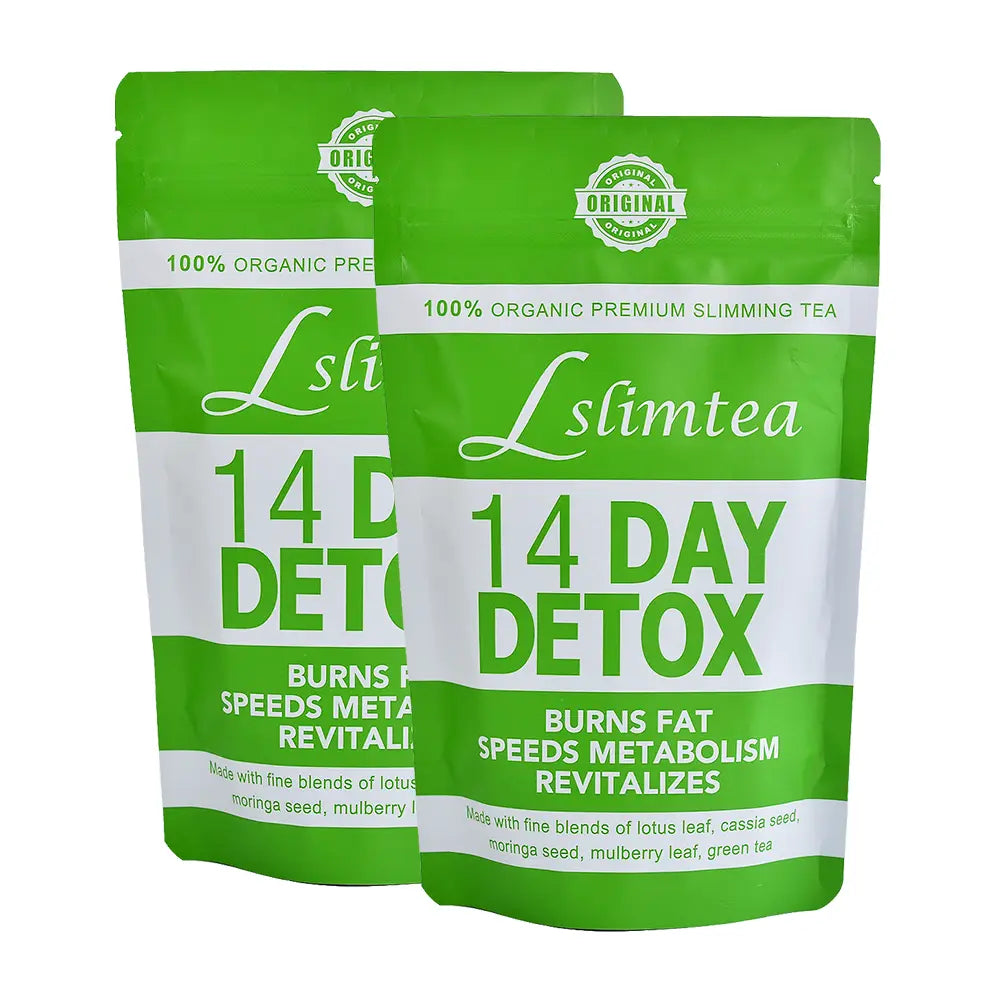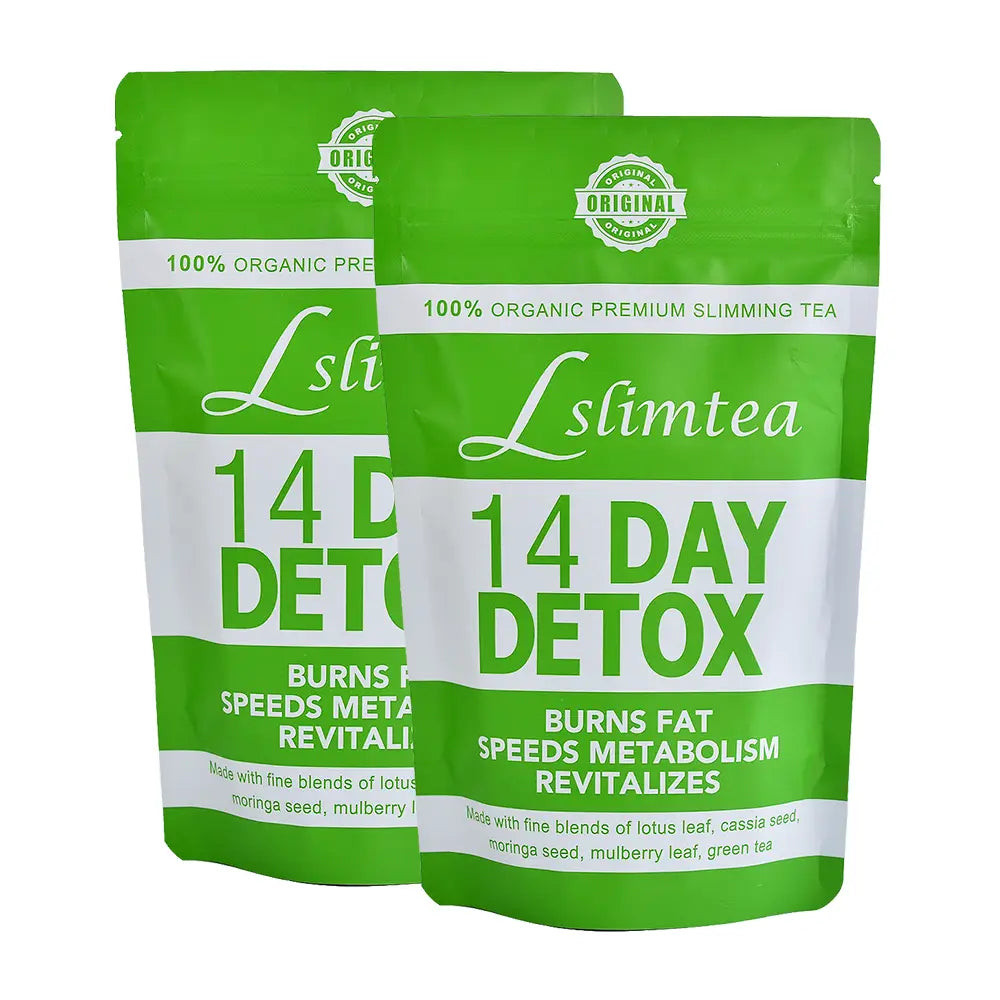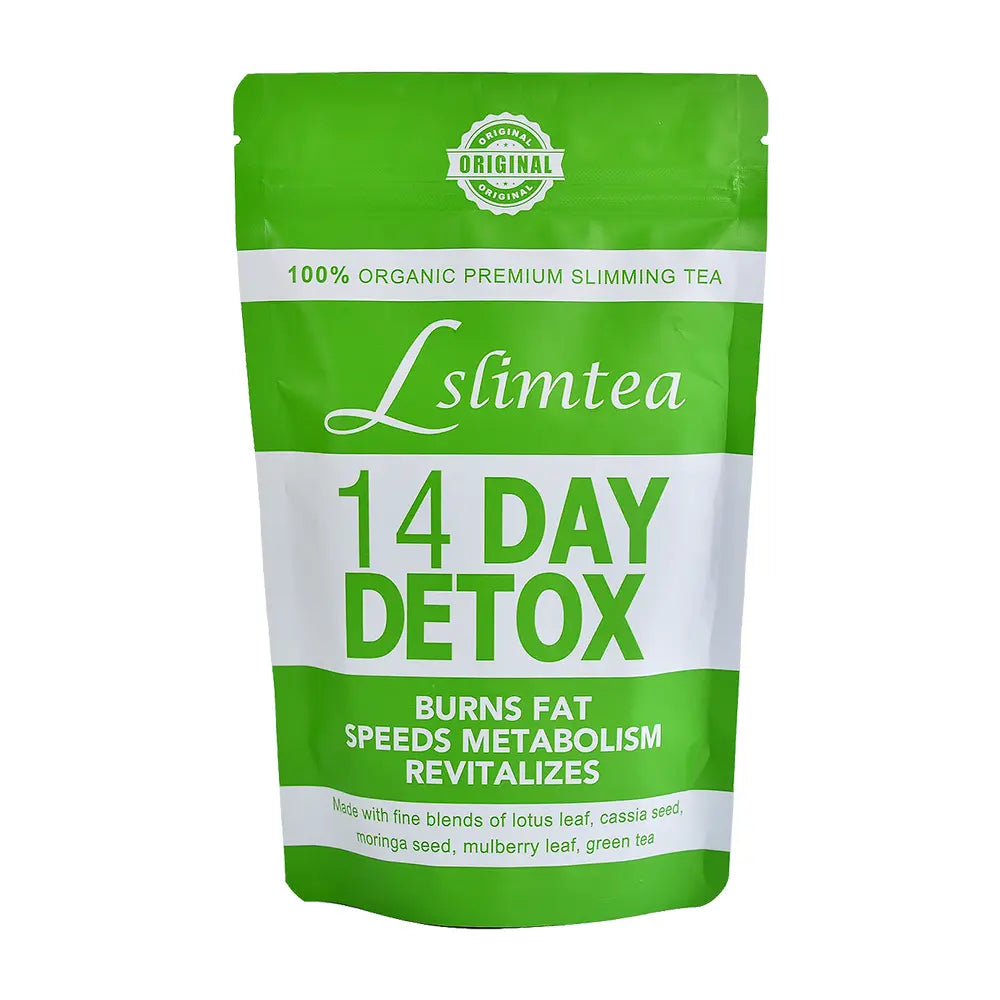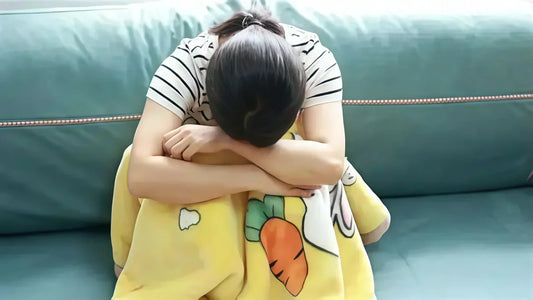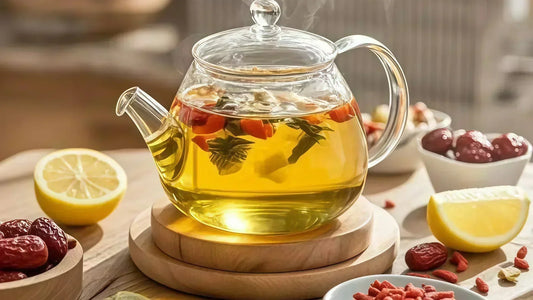What is TCM?
HiherbsOfficial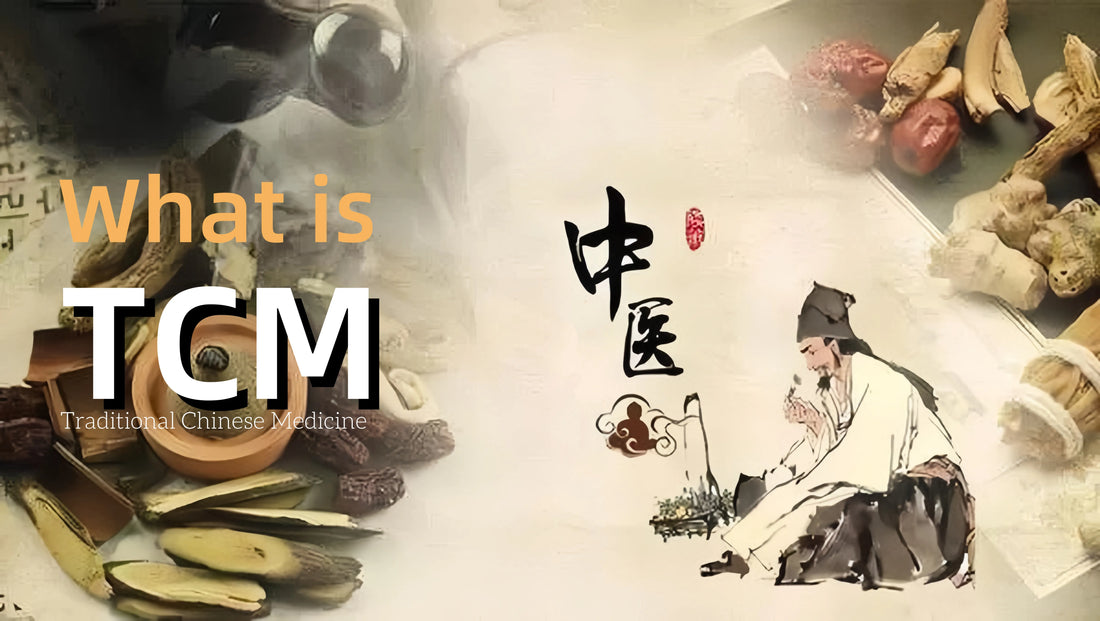
Share
TCM, short for Traditional Chinese Medicine, is a unique medical system that primarily diagnoses conditions through observation (wang), auscultation and olfaction (wen), inquiry (wen), and pulse-taking (qie). Treatment methods include Chinese herbal medicine, acupuncture, Tui Na massage, cupping, and Gua Sha.
The Origins of Chinese Medicine
Its roots can be traced back to China's ancient primitive society. From that time, people began to observe and summarize phenomena related to health and illness, and tried to use plants, animals, and minerals from nature to treat diseases.
Thousands of years ago, Chinese ancestors began to "battle it out" with diseases! Without microscopes or precision instruments, they used their eyes to observe and their bodies to test medicines. Shennong tasted hundreds of herbs, personally testing the properties and effects of 365 medicinal materials; Fuxi crafted nine needles, grinding stones and bones into tools for healing. In their daily lives and production, ancestors summarized the concept of "Unity of Heaven and Humanity." They discovered that climate change, geographical environment, and human health were closely related. Through generations of accumulated experience, unique theoretical systems such as meridians, Yin-Yang and Five Elements, and Qi, Blood, and Body Fluids were formed. They also invented "divine tools" like acupuncture, Tui Na, and Chinese herbal formulas – all treasures explored through self-reliance!

Principles of Treatment
The principles of Traditional Chinese Medicine treatment are primarily based on the holistic concept, syndrome differentiation and treatment, and the harmonization of Yin and Yang. It aims to treat diseases by adjusting the body's internal balance and its coordination with the external environment.
Core Theories
1. Holistic Concept: Considers the human body as an organic whole, with all organs, Qi, Blood, and Body Fluids interconnected. Illness is seen as a manifestation of overall functional imbalance, requiring treatment from a comprehensive perspective, such as "treating liver disease by regulating the Spleen" or "harmonizing the heart by balancing the Kidneys."
2. Syndrome Differentiation and Treatment: Through the comprehensive application of the Four Diagnostic Methods (observation, auscultation/olfaction, inquiry, pulse-taking), it analyzes the nature of the illness (e.g., wind-cold-dampness-heat), the affected area, and individual body constitutions to formulate personalized treatment plans, such as using warm herbs for cold syndromes or tonifying methods for deficiency syndromes.
3. Yin-Yang and Five Elements: Uses the balance of Yin and Yang as the standard for health, restoring balance by regulating excesses or deficiencies, for example, "carefully observing the location of Yin and Yang and adjusting them, aiming for balance." The Five Elements theory is used to explain the inter-promoting and inter-restraining relationships among organs, such as Liver Wood overacting on Spleen Earth leading to digestive problems.
Treatment Modalities
1. Chinese Herbal Medicine (Zhongyao): Utilizes the Four Natures (Siqi) and Five Flavors (Wuwei) of medicinal substances to supplement or counteract deficient or excessive energies in the body. For example, Coptis (Huanglian) is bitter and cold to clear heat, while Prepared Aconite (Fuzi) is pungent and hot to dispel cold.
2. Acupuncture (Zhenjiu): Regulates the flow of Qi and Blood in the meridians by stimulating specific acupoints. For instance, needling Neiting (ST44) can clear Stomach Fire for toothache, and moxibustion at Zusanli (ST36) can warm the Middle Jiao to dispel cold for stomach pain.
3. External Therapies (Waizhi Fa): Includes cupping (Baguang), Gua Sha, and topical plasters. These work through skin absorption or meridian conduction. For example, fire cupping expels cold and dampness, and medicated plasters directly target lesions to reduce swelling and relieve pain.

Why Can Chinese Herbal Medicine Treat Illness?
Many mistakenly believe that Chinese herbs are only plant-based, such as common chrysanthemum, mulberry leaves, loquat leaves, etc. But in fact, Chinese herbal medicine also includes animal-derived substances, such as cicada moulting (shed skin of cicadas) and centipedes. There are also mineral-based ones, such as lodestone and cinnabar. Some even include Wulingzhi (dried feces of flying squirrels) and Tongbian (child's urine) from historical texts. So, many Chinese herbs are quite fascinating and unique!
Just as each person has their own unique personality traits, Chinese herbal medicines are the same; they possess unique, inherent characteristics, which we call "the nature and flavor (xingwei) of Chinese herbs," also known as the "Four Natures and Five Flavors." The Four Natures are the cold, hot, warm, and cool properties inherent to the seasons, bestowed by Heaven; the Five Flavors are sour, bitter, sweet, pungent, and salty, bestowed by Earth. Therefore, each single herb is a unique existence, with different inherent qualities.
Yin-Yang Qi
Chinese herbs gather the essence of Heaven's and Earth's Yin and Yang, forming four characteristics: warm, cool, cold, and hot (corresponding to the Qi of the four seasons: spring, summer, autumn, winter), which represent the two Qi of Yin and Yang. "Like calls to like, and like seeks like" – cold conditions are treated with hot remedies, and hot conditions with cold remedies. This is the fundamental principle of Chinese herbal conditioning. Just as there is Lesser Yang of spring, Greater Yang of summer, Lesser Yin of autumn, and Greater Yin of winter, Chinese herbs, with their seasonal Qi, harmonize our bodies.

Five Elements Qi
The world of Chinese herbal medicine is rich and colorful, encompassing animal-derived, plant-based, and mineral-based medicines, each possessing different Five Elements attributes and powerful "energy fields" (Qi fields). These medicinal materials are not just tools for treating diseases; they are also assistants in harmonizing the Five Elements within our bodies.
Five Flavors and Five Organs
Pungent, sour, salty, bitter, and sweet are not only the actual tastes of the medicinal materials but also a highly generalized summary of their therapeutic principles. Each flavor has a close connection with our Five Zang Organs (Liver, Heart, Spleen, Lung, Kidney). As mentioned in *Suwen*: "Sour enters the Liver, bitter enters the Heart, sweet enters the Spleen, pungent enters the Lung, and salty enters the Kidney." This means that medicinal materials of different flavors can target different organs and exert their unique therapeutic effects.

The essence of Chinese herbal conditioning is to adjust the body's Yin-Yang balance and the circulation of the Five Elements to achieve healing.
Health Teas and Chinese Herbal Medicine
Tea therapy is a wellness practice deeply rooted in both Chinese medicine and tea culture.
The essence of tea lies in the shared origin of tea and medicine. Like any traditional herbal product, tea also has its Four Natures, Five Flavors, and Meridian Tropism. Traditional Chinese medicine research posits that humans and the natural world are a dynamically developing and changing whole. The seasonal transitions of spring warmth, summer heat, autumn coolness, and winter cold can subtly influence the body's organs, meridians, Qi, Blood, and Yin-Yang balance. By combining this with the characteristics of tea, we can regulate our body to achieve its optimal balanced state.
Since the Han Dynasty, many ancient books and medical texts have recorded extensive discussions on the medicinal value of tea and its suitable applications. According to incomplete statistics, 16 ancient medical books documented 20 health benefits and 219 effects of tea.

The choice of herbal tea should vary by individual. It should not be fully equated with tonic supplements, nor should it be consumed in large quantities for extended periods, to avoid side effects. Furthermore, it is crucial not to easily take Chinese herbal teas concurrently with Western medications, to prevent potential harm to the body.
In Conclusion
There is still much to explore regarding TCM culture, and one article cannot fully elaborate on it. As a torchbearer of TCM culture, Hiherbs has the obligation and responsibility to promote traditional Chinese herbal medicine. To enable more people to enjoy the health benefits brought by TCM culture, we have launched a series of health teas and dietary supplements. Our mission is to bring TCM culture to the world, provide humanity with a new health experience, and let TCM benefit all people. If you are interested in natural TCM culture or new methods of pure natural healing, please leave your email and follow our blog for daily knowledge sharing or new self-developed herbal products for your use.
Further Reading (Glossary of TCM Terms)
* Four Diagnostic Methods (望闻问切 - Wàng Wén Wèn Qiè): The primary diagnostic techniques in TCM: Wang (Observation - includes observing the patient's spirit, complexion, tongue, and body posture); Wen (Auscultation and Olfaction - listening to sounds and smelling odors); Wen (Inquiry - asking about symptoms, medical history, lifestyle, etc.); Qie (Pulse-taking - feeling the pulse at various positions on the wrist, also palpating other areas of the body).
* Chinese Herbal Medicine (中药 - Zhōngyào): A vast category of medicinal substances used in TCM, primarily derived from plants, but also including animal and mineral products. They are typically used in formulas.
* Acupuncture (针灸 - Zhēnjiǔ): A therapeutic technique where thin needles are inserted into specific points on the body (acupoints) to stimulate and regulate the flow of Qi.
* Tui Na massage (推拿 - Tuīná): A form of Chinese therapeutic massage that uses various hand techniques to push, pull, knead, and press on acupoints and meridians to promote Qi and Blood circulation.
* Cupping (拔罐 - Báguàn): A therapy where cups (made of glass, bamboo, or silicone) are placed on the skin to create suction, promoting blood flow and alleviating pain, muscle stiffness, and other conditions.
* Gua Sha (刮痧 - Guāshā): A traditional healing technique where a smooth-edged tool is used to stroke the skin, creating light petechiae (red spots), to promote blood circulation and remove stagnant Qi and blood.
* Shennong tasted hundreds of herbs (神农尝百草 - Shénnóng Cháng Bǎicǎo): A legendary tale from ancient China, attributing the discovery of medicinal properties of various plants to Emperor Shennong, who supposedly tasted them himself.
* Fuxi created the nine needles (伏羲制九针 - Fúxī Zhì Jiǔzhēn): A legendary account associating the mythical emperor Fuxi with the invention of the earliest forms of acupuncture needles.
* Unity of Heaven and Humanity (天人合一 - Tiān Rén Hé Yī): A fundamental concept in ancient Chinese philosophy and TCM, emphasizing the interconnectedness and harmony between humans and the natural world, suggesting that human health is influenced by cosmic and environmental changes.
* Meridians (经络 - Jīngluò): Invisible pathways or channels in the body through which Qi (vital energy) and Blood flow, connecting organs, limbs, and other body parts. Acupoints are located along these meridians.
* Yin-Yang and Five Elements (阴阳五行 - Yīnyáng Wǔxíng):
* Yin-Yang: A dualistic concept describing two complementary and opposing forces (e.g., light/dark, hot/cold, active/passive) whose balance is essential for health.
* Five Elements: A theory that classifies all phenomena into five inter-related phases or elements (Wood, Fire, Earth, Metal, Water), used to explain physiological and pathological relationships within the body and between the body and its environment.
* Qi, Blood, and Body Fluids (气血津液 - Qì Xuè Jīnyè): The fundamental substances that constitute the human body and maintain its life activities in TCM.
* Qi (气): Vital energy or life force.
* Blood (血): Nourishes the body.
* Body Fluids (津液): All normal fluids in the body, providing lubrication and nourishment.
* Syndrome Differentiation and Treatment (辨证论治 - Biànzhèng Lùnzhì): The unique diagnostic and therapeutic approach in TCM. It involves analyzing and classifying the patient's symptoms, signs, and medical history into specific "syndromes" (patterns of disharmony), and then choosing a tailored treatment strategy based on that specific syndrome, rather than just treating a disease name.
* Four Natures and Five Flavors (四气五味 - Sìqì Wǔwèi): Classification system for Chinese herbs based on their energetic properties and tastes.
* Four Natures (四气): Refers to the thermal properties: cold (寒), cool (凉), warm (温), and hot (热).
* Five Flavors (五味): Refers to the tastes: pungent (辛), sweet (甘), sour (酸), bitter (苦), and salty (咸), each corresponding to specific organ systems and therapeutic actions.
* Liver Wood Overacting on Spleen Earth (肝木乘脾土 - Gān Mù Chéng Pí Tǔ): An example of a pathological relationship within the Five Elements theory. It describes a situation where an imbalance in the Liver (Wood element) negatively affects the Spleen (Earth element), often leading to digestive problems.
* Fire Cupping (火罐 - Huǒguàn): A specific technique within cupping therapy where fire is used to create a vacuum inside the cup before applying it to the skin.
* Wulingzhi (五灵脂 - Wǔlíngzhī): A traditional Chinese medicinal ingredient consisting of the dried feces of certain flying squirrels. It is used to invigorate blood and stop bleeding.
* Tongbian (童便 - Tóngbiàn): Literally "child's urine." Historically used in some traditional Chinese medicine contexts, though its use is extremely rare and controversial in modern practice. It's often associated with older folk remedies rather than mainstream clinical TCM today.
* Qi of the Four Seasons (四时之气 - Sìshí zhī Qì): Refers to the distinct energetic influences and characteristics associated with each of the four seasons, which influence human health in TCM.
* Five Zang Organs (五脏 - Wǔzàng): The five solid, vital organs in TCM that store and regulate fundamental substances: Liver, Heart, Spleen, Lung, and Kidney. They are considered functional entities rather than merely anatomical organs.
* Meridian Tropism (性味归经 - Xìngwèi Guījīng): A concept in Chinese herbal medicine that describes which meridians and organs an herb (or tea) primarily affects, in addition to its nature and flavor.
